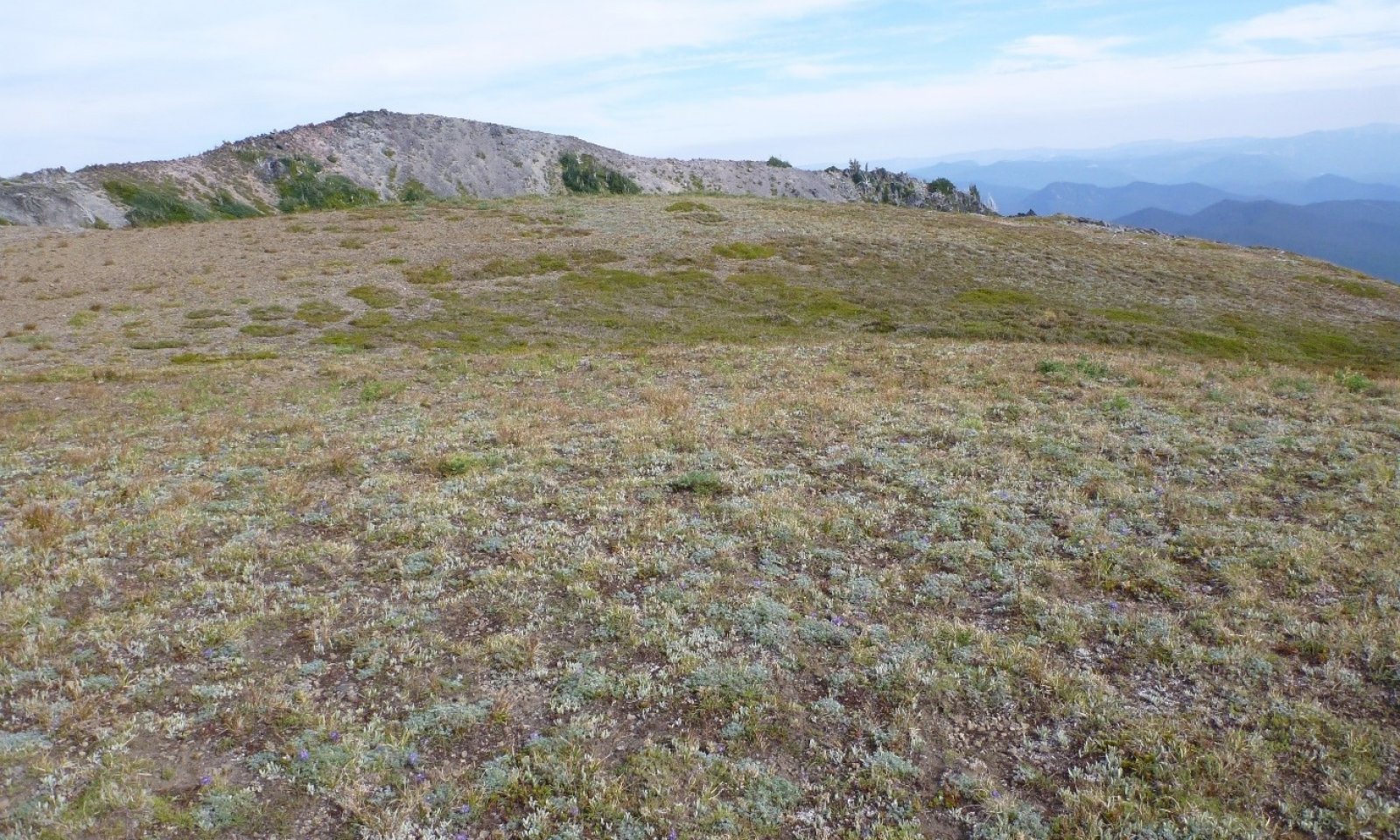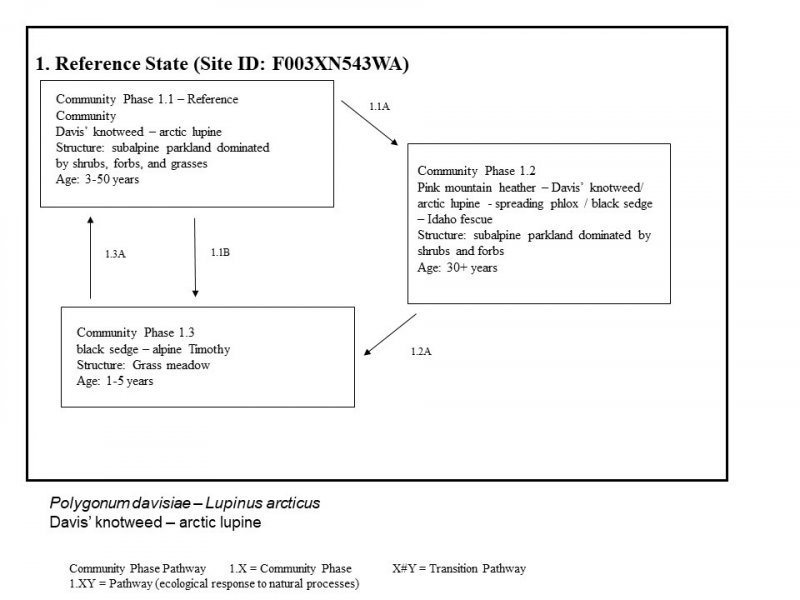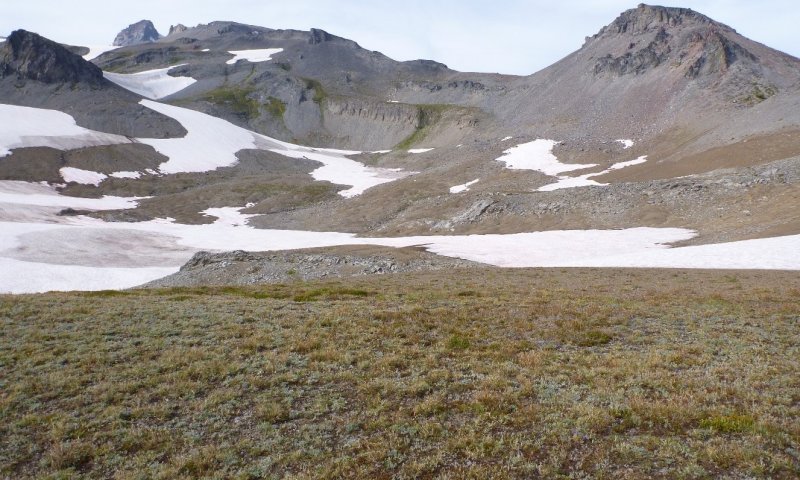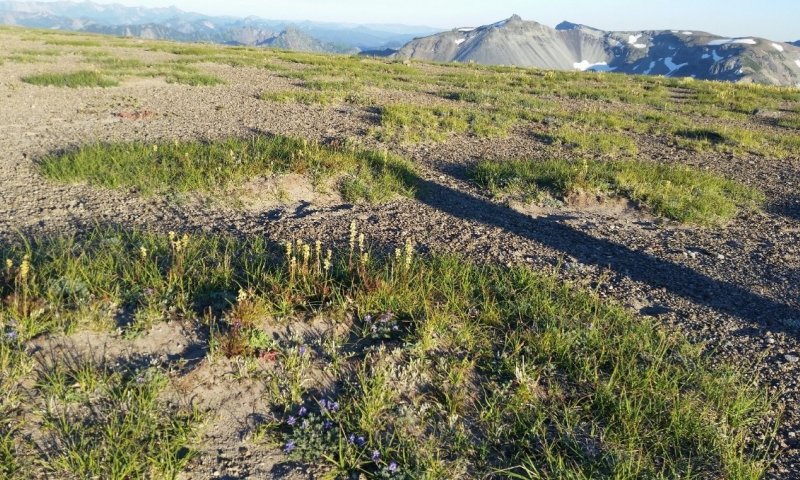

Natural Resources
Conservation Service
Ecological site R003XN543WA
Southern Washington Cascades Alpine Tundra
Last updated: 1/29/2025
Accessed: 12/08/2025
General information
Provisional. A provisional ecological site description has undergone quality control and quality assurance review. It contains a working state and transition model and enough information to identify the ecological site.
MLRA notes
Major Land Resource Area (MLRA): 003X–Olympic and Cascade Mountains
Steep mountains and narrow to broad, gently sloping valleys characterize this region. A triple junction of two oceanic plates and one continental plate is directly offshore from Puget Sound. Subduction of the oceanic plates under the westerly and northwesterly moving continental plate contributes to volcanic activity in the Cascades. Movement between these plates has resulted in major earthquakes in this area in the past and the formation of large stratovolcanoes. The Cascade Mountains consist primarily of volcanic crystalline rocks with some associated metasedimentary rocks. The average annual precipitation ranges from 60 to 100 inches in much of the region and 30 to 60 inches on the east side of the Cascade Mountains.
The dominant soil orders in this MLRA are Andisols, Spodosols, and Inceptisols, with minor amounts of Entisols, and Histosols. The soils in the area dominantly have a frigid or cryic soil temperature regime and an udic soil moisture regime. They generally are shallow to very deep, well drained, ashy to medial, and loamy or sandy and occur on mountain slopes and ridges.
Ecological site concept
This ecological site is typically found at the higher elevations of the Southern Washington Cascades and Mt. Rainier that comprise the upper limits of plant growth, at elevations ranging from 4,600 to 11,000 ft. While this ecological site has a broad range in elevation, it is most commonly found from 7,000 to 11,000 feet. The primary abiotic factors that drive this ecological site are lack of precipitation from a rain shadow and high elevations that result in cool temperatures even in the summer, extremely cold winters, high winds, intense solar radiation, short growing season, and heavy snow pack. As a result, plants are more sparsely located on the landscape and adapted to very challenging growing conditions.
Soils that support this ecological site occur in the cryic soil temperature regime and the udic soil moisture regime and are formed in volcanic ash and colluvium. They are coarse textured, and are low in organic matter. The site is often buried under a heavy snow load which provide more insulation for plants during the dormant season, and often result in a significantly shorter growing season that other sites on Mt. Rainier.
Common plants include Davis’ knotweed (Polygonum davisiae), tundra aster (Oreostemma alpigenum var. alpigenum), alpine leafybract aster (Symphyotrichum foliaceum var. foliaceum), Penstemon (Penstemon sp.), common yarrow (Achillea millefolium), common juniper (Juniperus communis var. montana), spreading phlox (Phlox diffusa), Tiling’s monkeyflower (Mimulus tilingii), arctic lupine (Lupinus arcticus), and asachinea lichen (Asahinea).
Associated sites
| R003XN542WA |
Southern Washington Cascades Subalpine Parkland Ecological Site R003XN543WA, Southern Washington Cascades Alpine Tundra, and Ecological Site R003XN542WA, Southern Washington Cascades Subalpine Parkland have some associated climatic and physiological features. However, Ecological Site R003XN543WA has a much higher elevation range which limits the growing season and impacts vegetation growth and production considerably. As a result, Ecological Site R003XN542WA is able to grow a wider variety of vegetation species with increased growth production when compared to Ecological Site R003XN543WA. |
|---|
Similar sites
| R003XN544WA |
Southern Washington Cascades Wet Alpine Tundra Ecological sites R003XN544WA, Southern Washington Cascades Wet Alpine Tundra, and R003XN543WA, Southern Washington Cascades Alpine Tundra, have some similar climatic and physiological features. Ecological site R003XN544WA is at lower elevations that are slightly warmer and receive more precipitation as compared to site R003XN543WA. As a result of increased moisture availability, site R003XN544WA supports a wider variety of vegetation species that have higher production as compared to site R003XN543WA. |
|---|
Table 1. Dominant plant species
| Tree |
Not specified |
|---|---|
| Shrub |
Not specified |
| Herbaceous |
(1) Polygonum davisiae |
Click on box and path labels to scroll to the respective text.



